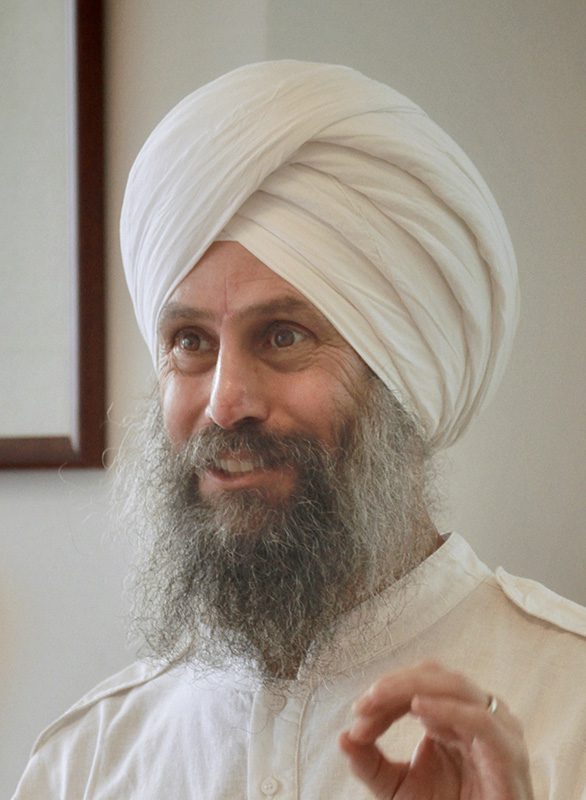No products in the cart.
By Srilatha Vuthoori, M.S. and Sat Bir Singh Khalsa, Ph.D.
Yoga has become very trendy in modern society and is rapidly increasing in popularity. Yoga is so well known for its reputation as a healthful practice that it is also used in numerous media advertisements to market products from pharmaceutical drugs to insurance. There is now also an official International Day of Yoga, on June 21st, recently designated by the UN General Assembly in response to a proposal by the prime minister of India. This increase in the prevalence and popularity of yoga in mainstream society is unprecedented.
 Swami Vivekananda was the first influential figure to bring yoga to the West. Addressing the 1893 World Parliament of Religions in Chicago he described the universality of religions and the philosophy of aspiring to infinite consciousness. Other notable yoga figures in the 1920’s and 1930’s were Paramahansa Yogananda who lectured to Boston academics, and political and religious leaders, Indra Devi who opened a yoga studio in Hollywood, and Krishnamurti, famous for his eloquent lectures on Eastern philosophy and yoga. In 1966 B.K.S. Iyengar’s Light on Yoga was published in the US, a book that is still considered a classic for yoga practice. The 60’s and 70’s saw the arrival of many yoga masters who came to teach yoga to North Americans including Swami Satchidananda, Amrit Desai, Swami Rama, Swami Vishnu-Devananda and Yogi Bhajan. Despite yoga’s popularity in the West not much was known regarding the prevalence and demographics of yoga users.
Swami Vivekananda was the first influential figure to bring yoga to the West. Addressing the 1893 World Parliament of Religions in Chicago he described the universality of religions and the philosophy of aspiring to infinite consciousness. Other notable yoga figures in the 1920’s and 1930’s were Paramahansa Yogananda who lectured to Boston academics, and political and religious leaders, Indra Devi who opened a yoga studio in Hollywood, and Krishnamurti, famous for his eloquent lectures on Eastern philosophy and yoga. In 1966 B.K.S. Iyengar’s Light on Yoga was published in the US, a book that is still considered a classic for yoga practice. The 60’s and 70’s saw the arrival of many yoga masters who came to teach yoga to North Americans including Swami Satchidananda, Amrit Desai, Swami Rama, Swami Vishnu-Devananda and Yogi Bhajan. Despite yoga’s popularity in the West not much was known regarding the prevalence and demographics of yoga users.
We now have available a number of statistical studies describing the use and the characteristics of yoga practice in different populations. A Yoga Journal survey found that 8.7% of U.S. adults (20.4 million adults) practiced yoga in 2012. The National Health Interview Survey (NHIS) conducted by the U.S. Centers for Disease Control (CDC) tracks the public’s practice of complementary and integrative medicine and revealed that yoga practice almost doubled between 2002 and 2012, increasing from 5.1% (10.4 million adults) to 9.5% of the population, respectively. In Australia, 12% of the adult population was found to practice yoga.
Studies conducted in the U.S., the U.K. and Australia also found that yoga users are likely to be young, female, white, college educated and employed (82% with disposable incomes). Adults aged 18-44 were the majority of those practicing yoga in 2012 (11.2% of U.S. adults aged 18-44). According to Yoga Journal’s survey, the individuals practicing yoga are 4 times more likely to be female (82.2% woman vs. 17.8% men). Another study examining the sociodemographic barriers in U.S. adults for mindfulness practices found that men were three times less likely to practice yoga. Reasons that may account for this gender imbalance include the possibility that men are not attracted to yoga because they are less flexible than women, or may feel out of place in venues dominated by women. However, the introduction of Power yoga, Bikram yoga and other yoga focused on strengthening may be slowly increasing the number of men practicing yoga. The NHIS survey also found that white adults were the majority of yoga users (11.2% of white adults in 2012). In contrast, the use of yoga among Hispanic adults and blacks was approximately 5% of these minorities in 2012. A survey tracking income in yoga practitioners revealed a strong disparity in this characteristic showing that over 30% of yoga users have an annual household income of $75,000 or more, with 15% earning over $100,000. A similar disparity exists with regards to education with nearly 50% of yoga practitioners having completed a college-level education or higher.
Flexibility, general conditioning, stress relief, improvement in overall health and physical fitness were the top reasons for starting yoga. In Australia, while 58% of respondents gave ‘reduce stress or anxiety’ as a reason for starting yoga, 79.4% of participants continued for this reason. A study of participants in the beginner’s yoga programs provided by the Yoga studios in Austin, Texas entitled Yoga in the Real World: Perceptions, Motivators, Barriers and Patterns of Use was recently published in the journal Global Advances in Health and Medicine. This study showed that the major reasons for practice included general wellness (81%), physical exercise (80%) and stress management (73%). Other reasons for practice included seeking a spiritual experience (37%) and therapeutic intentions including alleviating a health condition (28%), illness prevention (23%), and doctor recommendation (5%).

There are more than 400,000 photos tagged #yogi on Instagram, enough to warrant a New York Times trend piece. The popularity of yoga is also reflected in the use of yoga in surprising places. There is an annual closing of New York City’s iconic Times Square for thousands of people to practice yoga on June 21st, The International Day of Yoga. Last year over 11,000 people participated, which is truly remarkable. This year delegates from the U.N. and India will be present to recognize the International Day of Yoga. Several airports now have dedicated yoga rooms for air travelers (e.g. San Francisco International and Helsinki Airports). There are also numerous fashionable yoga retreat spots now available in destinations including Mexico, Costa Rica, Bahamas, Hawaii and Bali.
Despite yoga’s popularity overall, yoga is most prevalent among white, female, educated, and higher income segments of the population. A recent CDC report on health disparities in the U.S. showed that education levels and race are predictors of poor health outcomes. For example, minorities and low education individuals were more likely to report fair or poor self-rated health and more physically and mentally unhealthy days than others. Meanwhile, studies show that yoga practice can help reduce stress and anxiety, improve fitness, and enhance mood and overall sense of wellbeing. However, the minority populations that need yoga the most (in terms of stress relief and increased well-being), are least likely to practice yoga. Although there are programs to promote yoga for underprivileged populations, the effort is small and penetration to the broader public is slow. Therefore, conducting well-designed clinical research studies could provide the evidence base required to justify implementation of yoga programs in the public schools, healthcare system, and workplace, extending the benefits of yoga to a larger number of people, including disadvantaged populations.
Teacher

Amrit Singh Khalsa is the CEO at KRI. He earned his PhD in Aeronautical Engineering from MIT and worked directly with Yogi Bhajan coordinated the 3HO legacy businesses and non-profit organizations, including KRI. After the passing of Yogi Bhajan, Amrit Singh served as the Chair of the Board for KRI for 7 years, and its Treasurer for 2 more years. Leaving a successful career in the health-food industry, Amrit is now dedicated full-time to the work of KRI.


 Français
Français Deutsch
Deutsch Italiano
Italiano Português
Português Español
Español 简体中文
简体中文
More Related Blogs